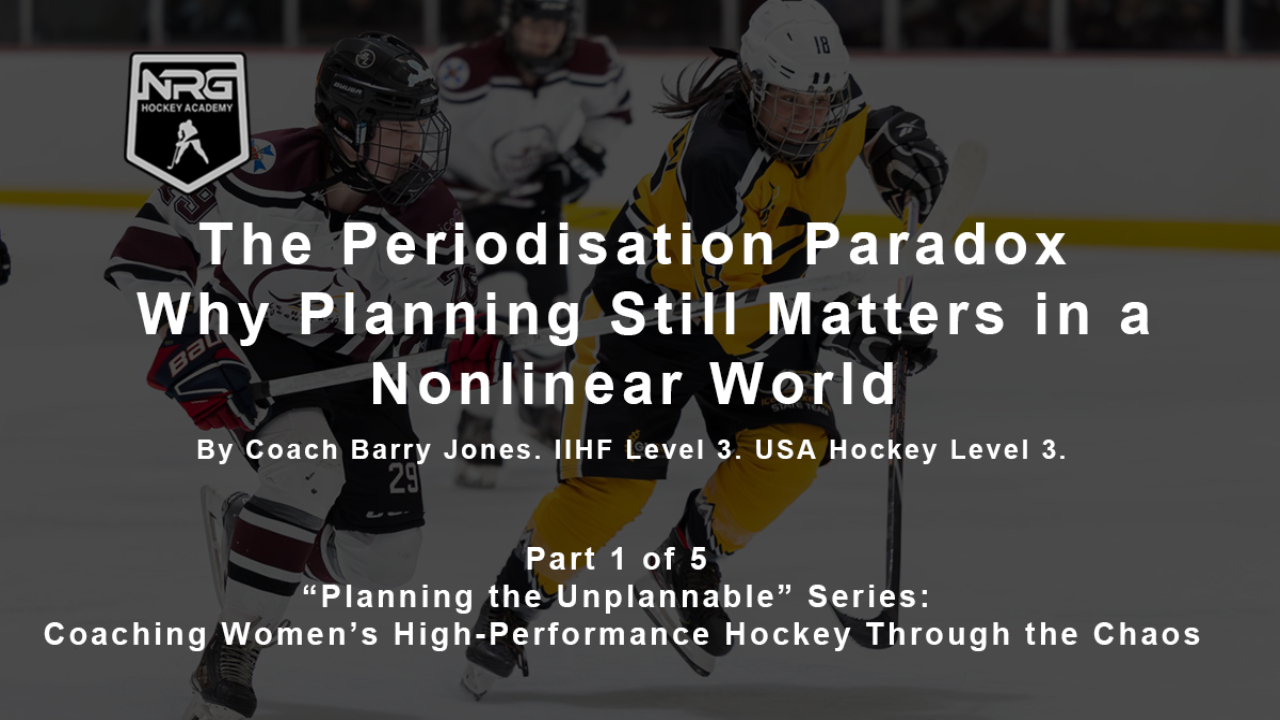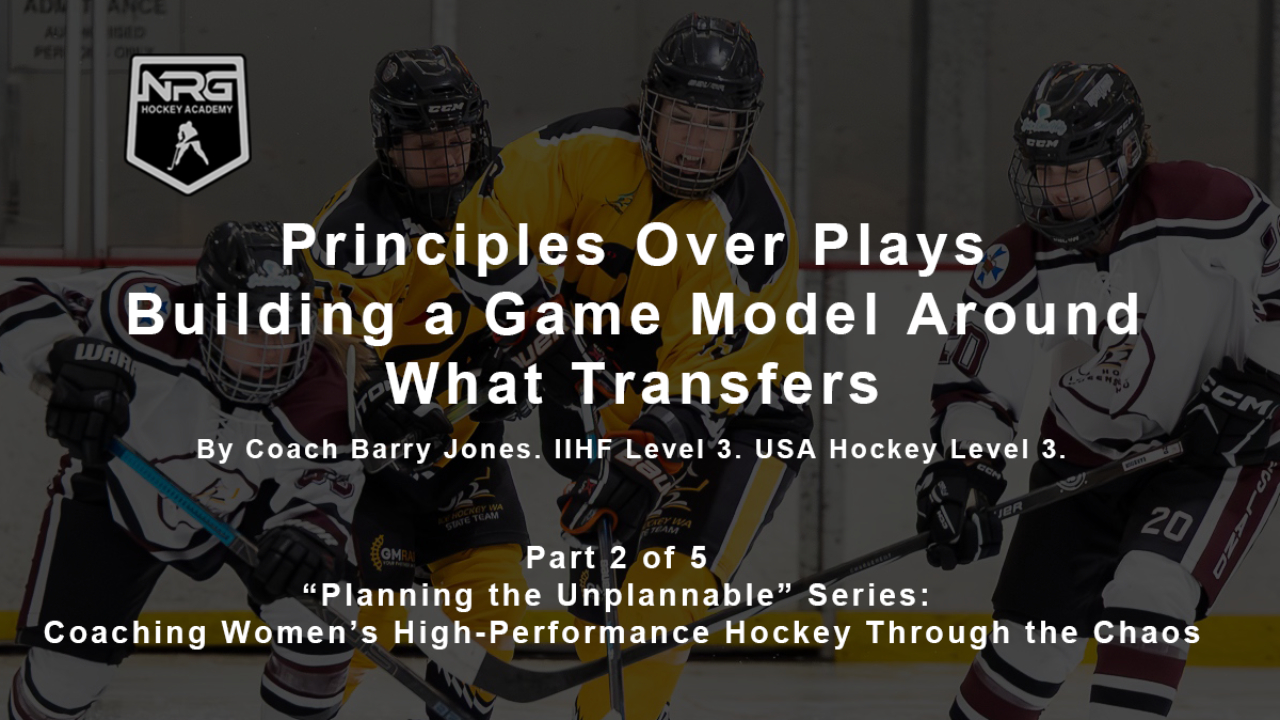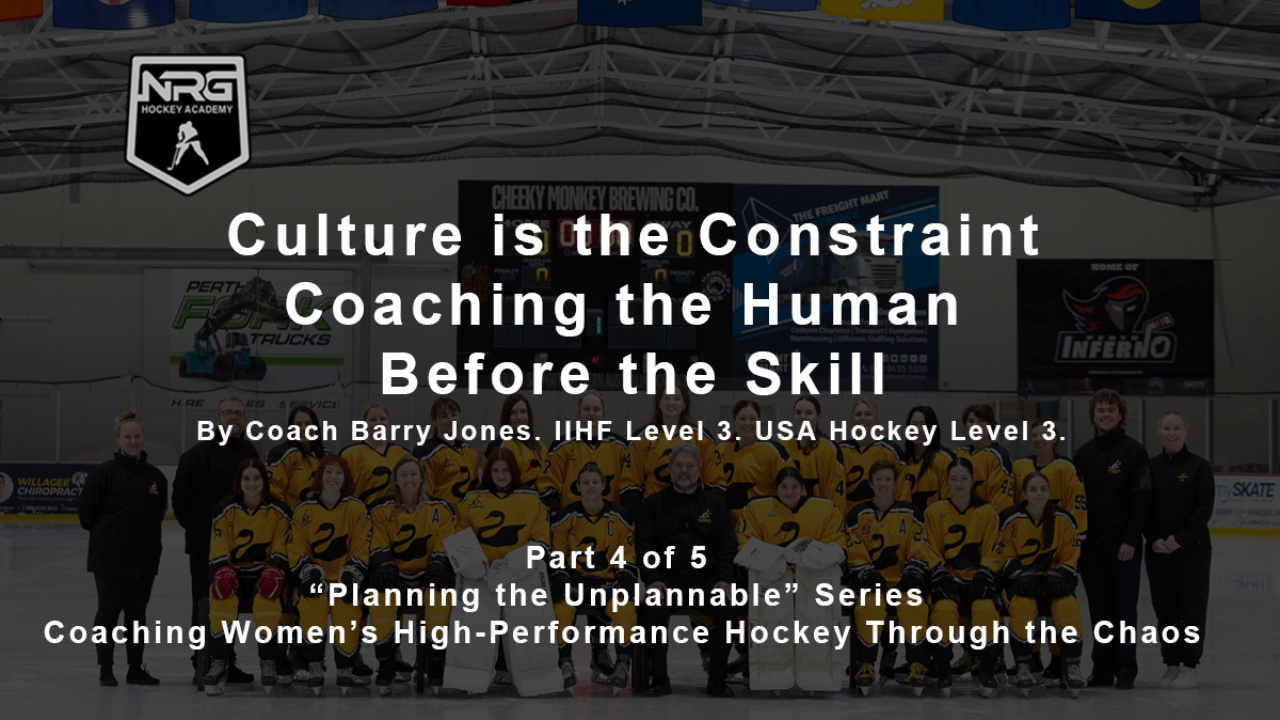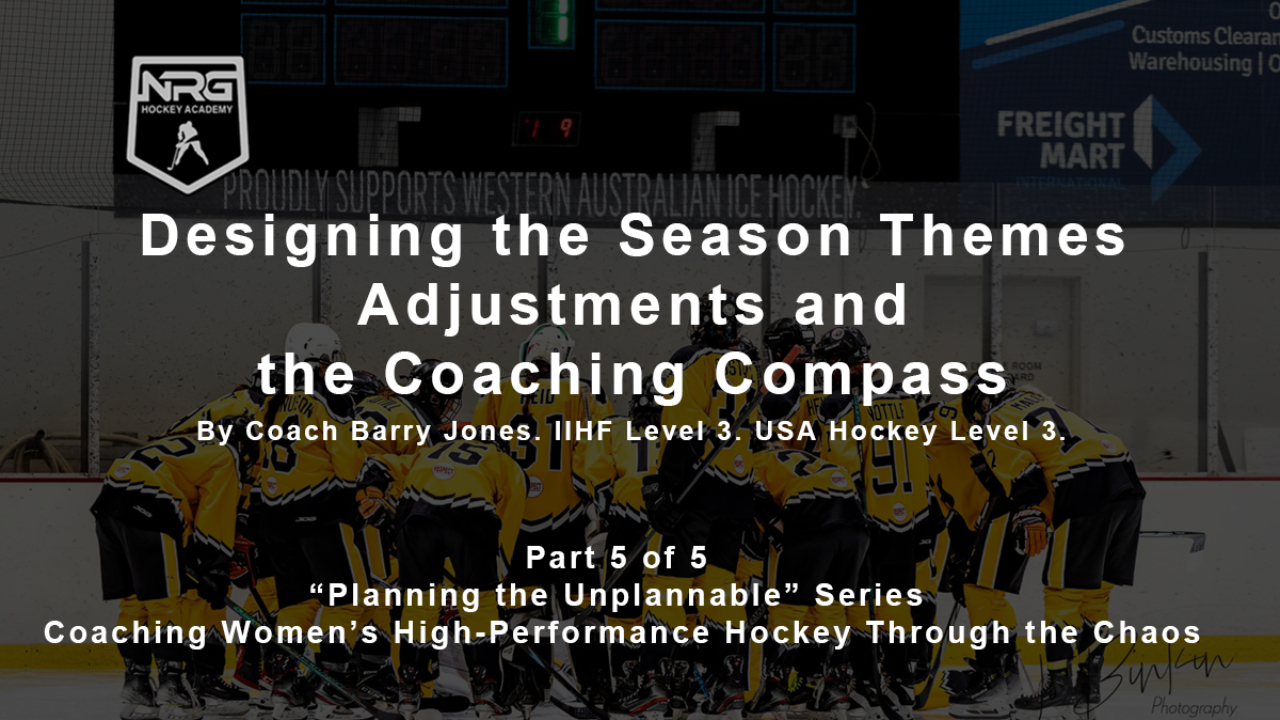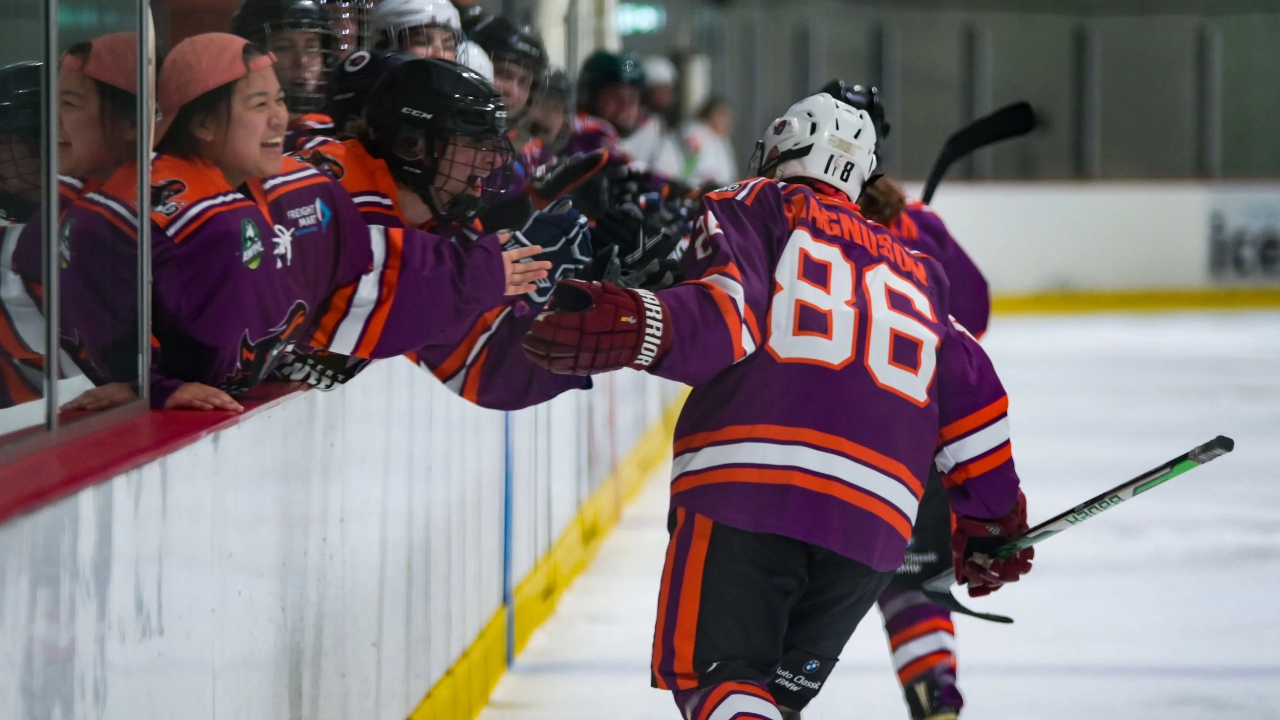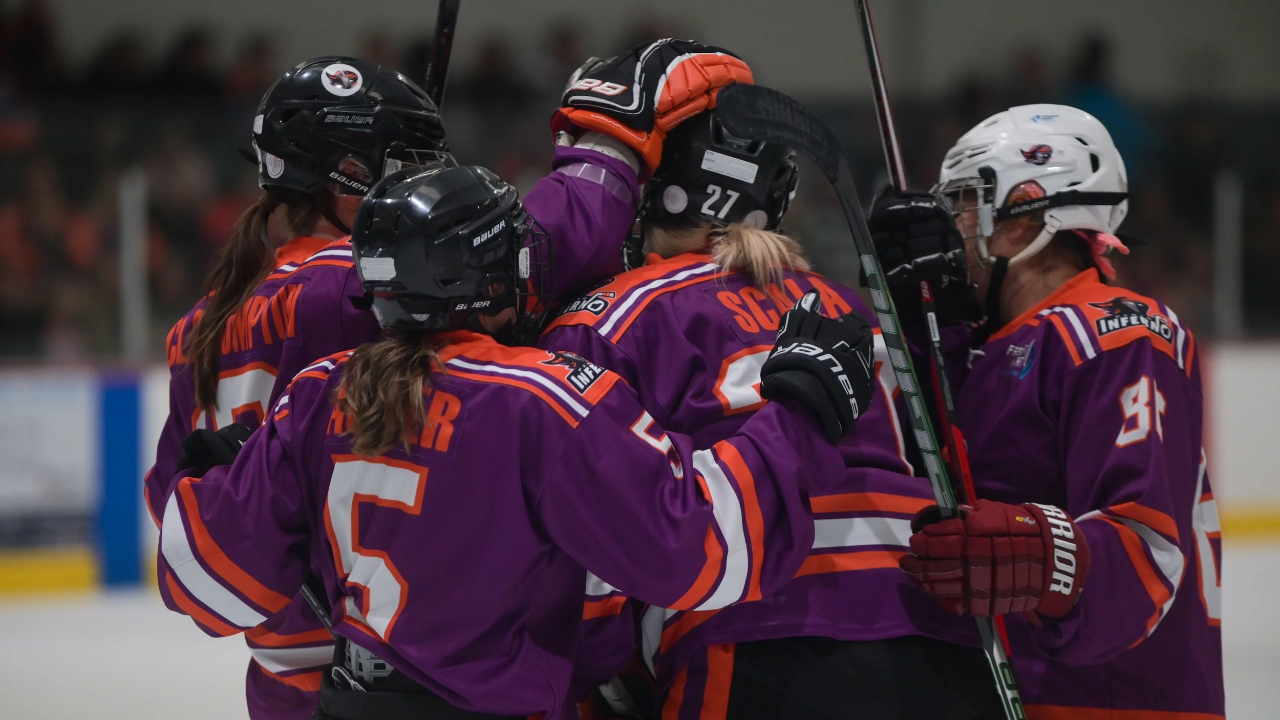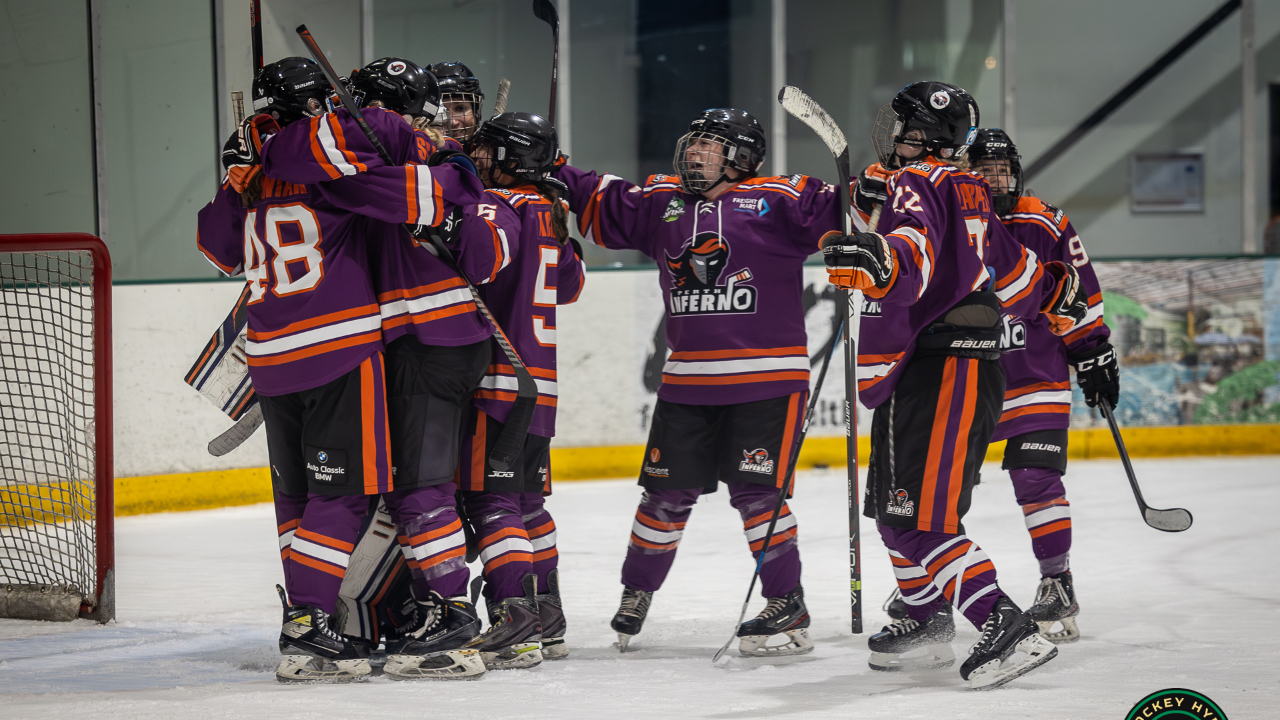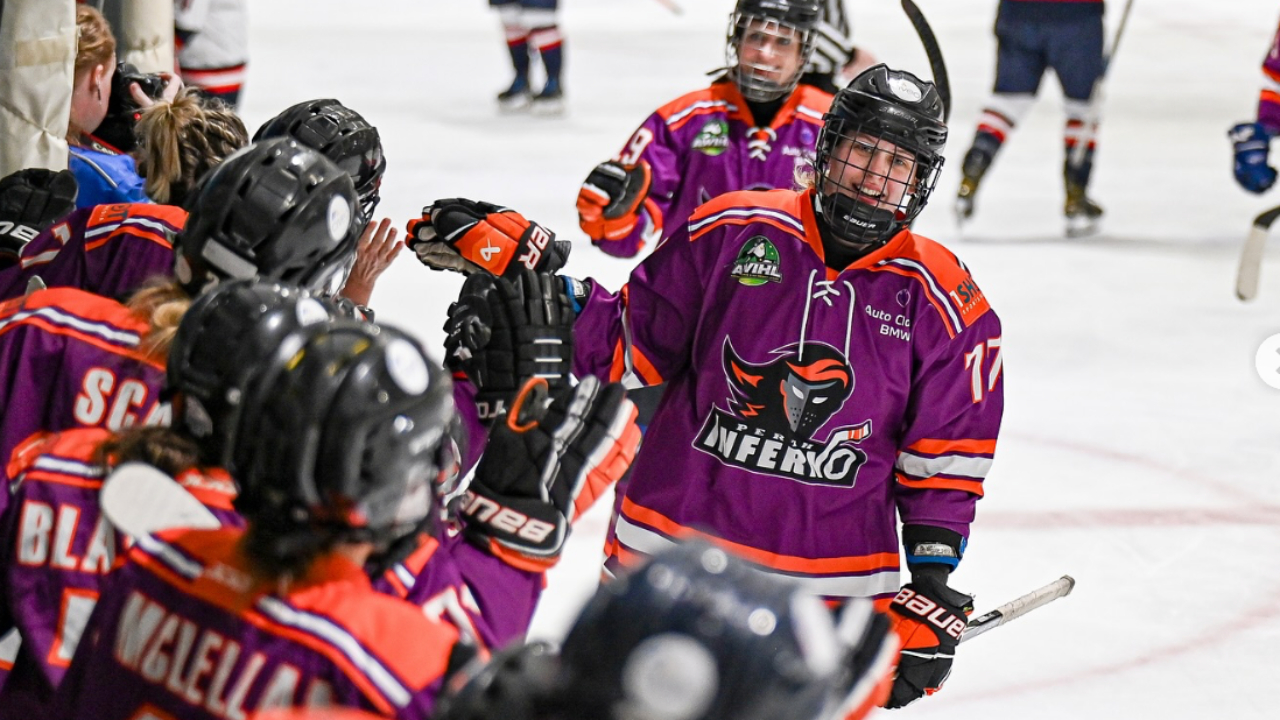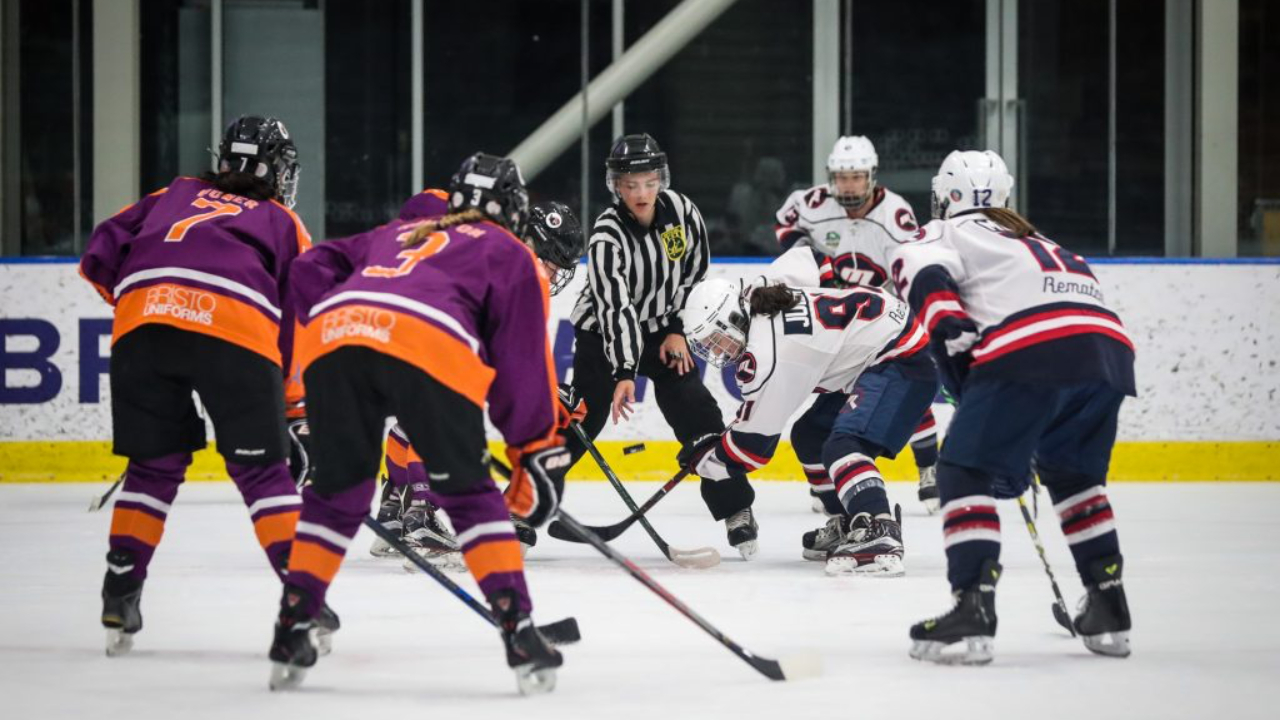
Inside My Madness: Coaching in a Nonlinear World
Article (1:5) The Beautiful Chaos: Why I Abandoned Fixed Periodisation
By Coach Barry Jones – IIHF Level 3 High Performance | USA Hockey Level 3 Performance | Head Coach, Perth Inferno (AWIHL)
I used to believe that a well-coloured spreadsheet could keep a season under control. Now my whiteboard looks like a crime scene of arrows, loops, and sticky notes, and somehow the team performs better than ever.
Confession of a Former Planner
For years I lived inside the comfort of fixed periodisation. I had six tidy blocks, each with its focus: speed, strength, tactics, recovery, repeat. Every cell in my calendar was perfectly shaded, and I convinced myself that order equalled progress.
Then the season started. Travel threw the schedule off. Illness hit. Players developed at different rates. Games didn’t line up with the plan. By mid-season, my clean, linear structure had turned into a patchwork of compromises.
The truth was simple but hard to swallow: hockey doesn’t care about your calendar.
The game bends, breaks, and morphs faster than any spreadsheet can adapt. I wasn’t coaching a plan anymore, I was defending it.
The Moment I Let Go
The breaking point came during a season when our team looked great in practice but fell apart under pressure. We were rehearsed but not ready. Every phase of our plan had been delivered exactly on schedule, yet the players weren’t transferring what they knew to the game.
That is when I realised the issue wasn’t their effort, it was my design. I was teaching the game in perfect order when the game itself was built on disorder.
So I deleted the calendar. I took the old periodisation model and replaced it with what I now call a living compass. The compass wasn’t about dates; it was about direction. Each week became a loop around a central theme that could stretch, shrink, or morph depending on what the game demanded.
Designing a Year Without Deadlines
Moving away from fixed periodisation didn’t mean I stopped planning. It meant I started planning for adaptation.
At Perth Inferno, we work through rotating themes: Breaking Pressure, Middle Lane Threat, Protect the House, Transition Control, Finishing Layers. These are not boxes on a timeline; they are living conversations between what we see in games, what we measure in practice, and how players respond.
Some themes last two weeks, some reappear six times a year. When a theme connects, we stay with it. When it loses traction, we adjust constraints or shift focus.
The key shift is simple: we move on because the environment tells us to, not because the calendar does.
Building Rhythm in a Nonlinear World
The hardest part was letting go of predictability. The best part was what replaced it.
Instead of mapping “speed week” or “power phase,” I build rhythm around feedback loops. Each training block now asks three questions:
-
What are we noticing?
-
What does the game need next?
-
What behaviours tell us the learning has stuck?
Film, KPIs, and athlete check-ins feed the answers. If players are still solving new problems inside a theme, we stay with it. If they are coasting, we shift the constraints.
It’s messy. It’s iterative. And it works.
From Planning to Co-Design
When I moved away from fixed periodisation, I also moved away from being the only voice in the room. The players became collaborators in the plan.
Each week they reflect through short feedback loops, quick RPE forms, film sessions, and conversations about what they felt, not just what they saw. Those insights often reshape the next week’s task.
It stopped feeling like I was delivering a program and started feeling like we were building one together. The process became alive, guided by shared curiosity instead of rigid control.
What Changed on the Ice
Our practices became noisier but more representative. Mistakes looked different, less mechanical, more creative. Players started solving problems I didn’t set.
That’s when I knew the shift was real. The game no longer punished unpredictability, it demanded it.
Adaptability became the new conditioning. Themes replaced phases. Identity replaced order. And the team learned to breathe with the rhythm of the season instead of fighting it.
Try This: One Week Without a Calendar
If you want to feel what this approach is like, try it for one week.
Take one theme that matters to your team, maybe Playing Under Pressure or Supporting the Puck. Scrap your normal drill plan and design three sessions around that theme. Let each session evolve from the last based on what players struggled with or solved.
Ask them what they noticed. Watch how quickly the environment starts teaching for you.
The point isn’t to be reckless, it’s to learn how the game teaches when we stop over-controlling it.
Final Reflection: Order in the Madness
The more I embrace the chaos, the more I see the pattern inside it.
Nonlinear coaching isn’t about having no plan; it’s about having a plan that listens.
It’s knowing that adaptation is not the enemy of structure, it is the structure.
I still use spreadsheets, but they no longer tell the story; they just help me remember where the story went.
If you ever look at your plan and think, this makes no sense anymore, good. It means you’re paying attention to the game, not the grid.
Read More
- 1 - The Beautiful Chaos: Why I Abandoned Fixed Periodisation
- 2 - Designing Without Deadlines: Building Adaptive Themes
- 3 - The Nonlinear Practice: Designing Sessions for Emergence
- 4 - The Beautiful Chaos: Why I Abandoned Fixed Periodisation
- 5 - Living the Madness: Culture, Trust, and the Adaptive Team
Author Bio
Coach Barry Jones is an IIHF Level 3 High Performance and USA Hockey Level 3 Performance coach, and the Head Coach of the Perth Inferno (AWIHL). His work explores nonlinear periodisation, ecological dynamics, and athlete-centred culture in women’s high-performance hockey.

